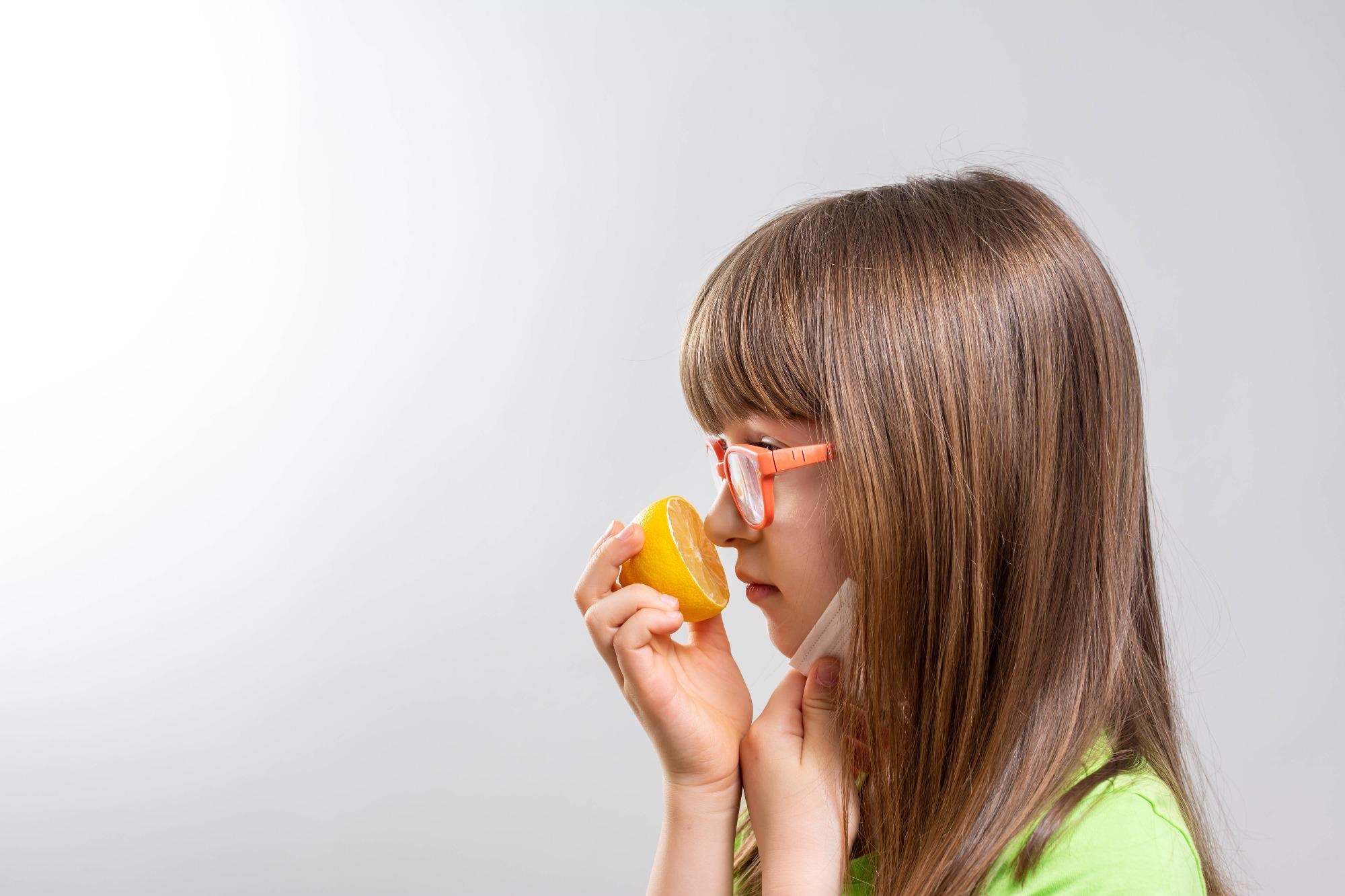Although the coronavirus disease 2019 (COVID-19) seems to have entered a slowing down phase, for the time being, researchers are continuing to ask questions about its pathology and treatment. One of the earliest discoveries was that anosmia was common in many patients. A new paper discusses the prevalence of this symptom in a pediatric cohort with COVID-19.
 Study: Prevalence of Anosmia in 10,157 Pediatric COVID-19 Cases Multicenter Study from Turkey. Image Credit: Nenad Cavoski / Shutterstock
Study: Prevalence of Anosmia in 10,157 Pediatric COVID-19 Cases Multicenter Study from Turkey. Image Credit: Nenad Cavoski / Shutterstock
Introduction
COVID-19 hit Turkey somewhat hard. Case definitions for this illness arose from different professional bodies, including the World Health Organization (WHO). Nevertheless, the presentation and course of the disease in children differed from those of adults.
Many patients infected by the severe acute respiratory syndrome coronavirus 2 (SARS-CoV-2) developed fever, cough, muscle pains and weakness. Although anosmia and ageusia are less common, these symptoms are still highly indicative of this infection.
The cause of anosmia in COVID-19 is unclear, but it may be due to the direct inflammatory response to the virus in the nasal mucosa, coupled with rhinorrhea. However, this explanation is belied by the anosmia seen in a number of patients without congestion or rhinorrhea. This is attributed to inflammation of the sensory neurons of the olfactory epithelium, which consists of specialized neurons disrupting olfactory signaling pathways.
A third possibility is that the virus invades the olfactory cortex, traveling along the olfactory pathway, causing anosmia specific to COVID-19.
Anosmia as a symptom varies in prevalence with the age, sex, severity of disease, and geographical region. The current paper, published in The Pediatric Infectious Disease Journal, examines the prevalence of anosmia in children with COVID-19 using a smell awareness survey.
What Did the Study Show?
The study included over 10,000 patients with COVID-19. Anosmia was present in 12.5% of them. Of the approximately 1,000 cases that could be reached, over 60% were female. The median age was ~16 years.
Most of the cases occurred in the age group 15-18 years. Almost 88% of them had mild disease, 12% moderate, and 0.1% each severe and critical disease, respectively. Almost 88% had no anosmia, equally split between the sexes.
The median age of the no-anosmia group was 14.7 years. The vast majority had a mild or asymptomatic infection, with 6% and 1% being moderate or severe. Only 0.2% had critical COVID-19.
The patients with anosmia were mostly female (>60%), and the mean age was higher. In 84% of cases, ageusia was present, and fatigue in half of them. Over 40% each also had cough, headache, fever and myalgia, while over a third had joint pain.
Anosmia (and ageusia) lasted for a median of 7 days. Anosmia was the sole symptom in 8% of cases. In over 40% of this subgroup of patients, anosmia and/or ageusia occurred after general symptoms set in, while both sets of symptoms occurred together in a third. In one in seven cases, anosmia was the presenting symptom, compared to 20% for ageusia.
After a month, anosmia was persistent in less than a tenth of cases, and ageusia in ~7%. On breaking these cases up by severity, only 8% of mild cases failed to show resolution of anosmia, but 13% of moderate to critical cases.
The researchers found that the patient score on the smell awareness questionnaire was higher at the time of admission compared to a month later, at a median of 94 vs. 46.
What Are the Implications?
This large case study showed an anosmia rate of 12.5%. The prevalence varies from study to study and has been found to be higher in Germany and France, for instance, compared to China. The reasons may be due to biases based on age, sex, ethnicity, or study size.
However, females tend to be at higher risk for anosmia. The exact mechanism may be disputable, but the fact that both anosmia and ageusia occur as the sole symptom in a small minority of patients, coupled with the relatively late presentation of these symptoms in almost half the cases, reduces their diagnostic value.
Nonetheless, the specificity of these symptoms indicates that once they are detected, the patient should be isolated to prevent the further spread of the virus.
The complete resolution of these neurological deficits in most cases (92%) is a hopeful sign. It indicates that the virus is cleared early before neuroinvasion occurs, or viremia with mild to moderate disease. In fact, critical COVID-19 is associated with a lower incidence of anosmia.
However, severely ill patients tended to have a more extended period of anosmia and lower olfactory recovery rates. Recovery tends to occur within two weeks to several months and is more rapid in children. In the current study, the median duration of either of these symptoms was 7 days.
Treatment protocols for anosmia remain undefined, though some specialists recommend steroids and omega-3 supplements with olfactory exercises. Further research can define the long-term course of COVID-19-related anosmia.